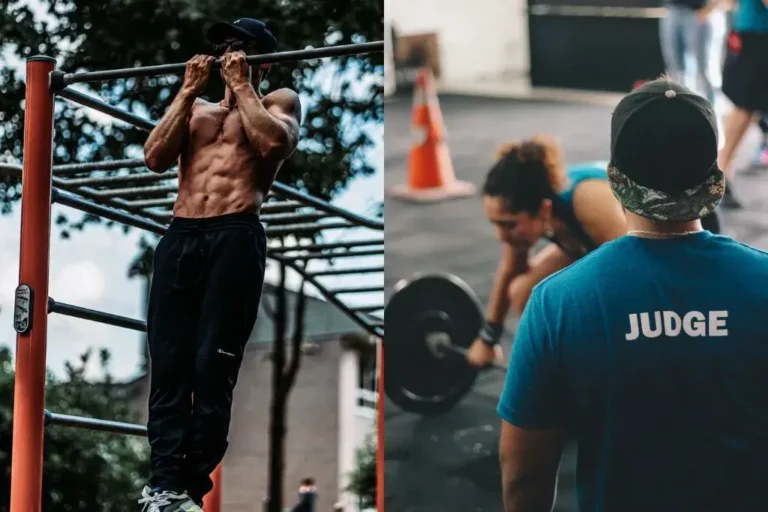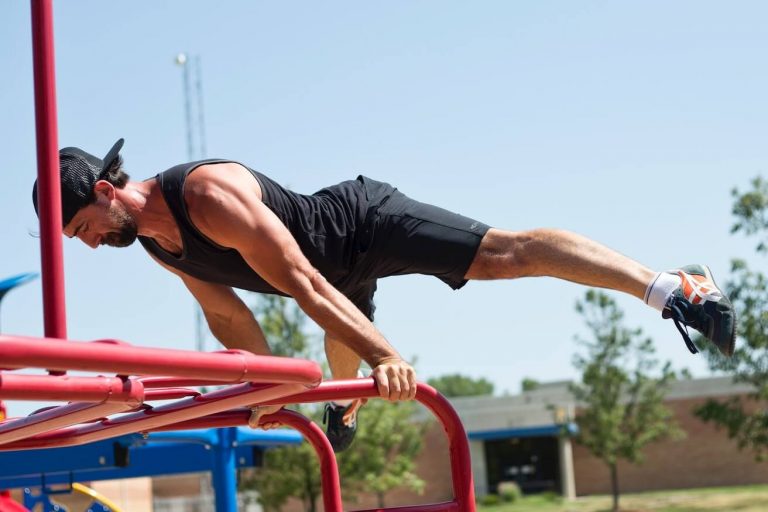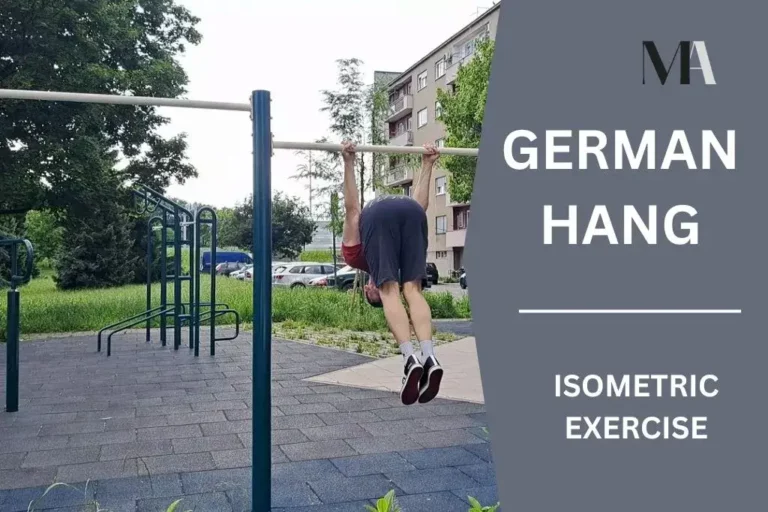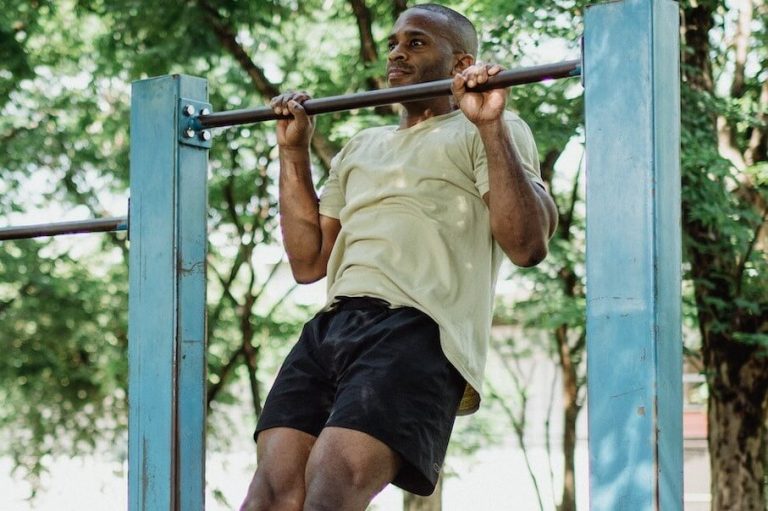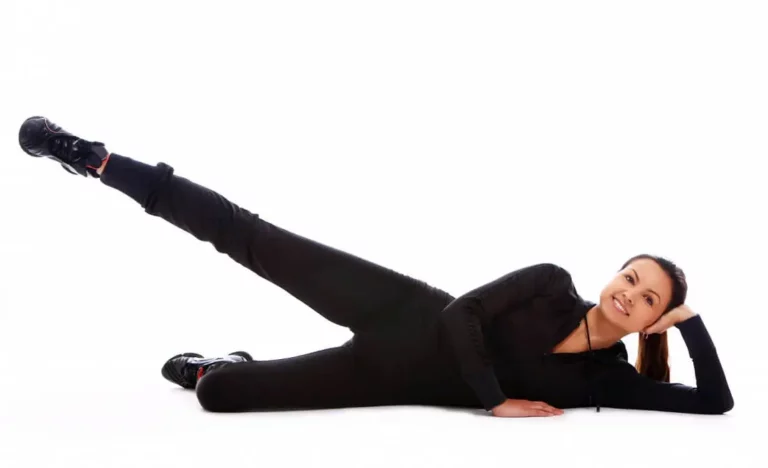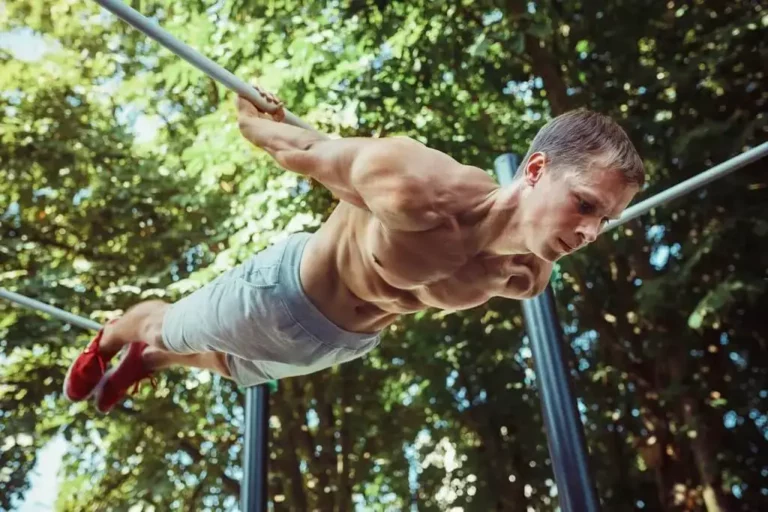Best Full Body Workout For Building Your Muscles
The best full body workout is a workout that will help you reach your fitness goals. If you are just starting your fitness journey, full body workouts are really useful. You get to work your entire body.
This leads to the equal development of all important muscle groups. So, you will avoid muscle imbalances that may lead to injury.
If you concentrate to correct your performance and aim for perfect exercise execution, you will see significant progress. When you are just starting out, your muscles will grow fast. This is a commonly known phenomenon called newbie gains.
Full body, otherwise called total body workouts are not just for beginners though. When you progress in your training and use body splits like upper / lower or push / pull / legs for some time, you may still benefit from a total body workout.
A full body workout will bring more frequency to your training. This may help you with muscle growth when you reach a plateau using other splits.
Best Full Body Workout: Muscles Worked
The great thing about the best full body workout is that it targets your entire body. So, you can expect to work on most of your body muscles when doing total body workouts.
Primary muscles targeted:
- Quads
- Hamstrings
- Calves
- Abs
- Upper back
- Lower back
- Shoulders
- Arms
- Chest
Best Full Body Workout: Equipment
If you are just starting out, you may not have any equipment at your disposal. This is no reason to avoid starting.
When I started out I had no equipment. I had no idea what I was doing. I totally sucked. But I started anyway.
I didn’t know how to correctly perform exercises. I didn’t know which exercise worked which muscles.
No clue about anything. However, I was still able to lose 20 lbs of fat. I started noticing I have some muscles underneath all this fat. After 2 years I was able to gain 9 lbs of lean muscle mass.
So, if you don’t have any equipment, use whatever you have access to. For example, instead of using dip bars, you can use two desks or chairs. Instead of a pull up bar, you may use a tree branch.
Equipment:
- Pull up bar
- Dip bars
- Resistance band
- Bench (or another elevated surface)
- Exercise mat (optional)
Best Full Body Workout: Sets And Reps
So, what will the best full body workout look like? You can find one example of a total body workout here. This will be a great starting point.
If you find this workout to be too easy or too hard for you, you can always check out various progressions and pick exercises that are more or less challenging.
- Upper back and biceps
- 3×5-8 chin ups
- Quads and glutes
- 3×5-10 lunges
- Chest and triceps
- 3×5-10 push ups
- 3×5-10 dips
- Abs
- 3×5-8 hanging leg raises
- Calves
- 3×10-15 calves raise
- Shoulders
- 3×6-12 pike push ups
- 3×10-15 band face pulls
- Hamstrings and glutes
- 3×10-15 single leg hip thrusts
- Lower back
- 3×8-15 superman lifts
Chin Ups
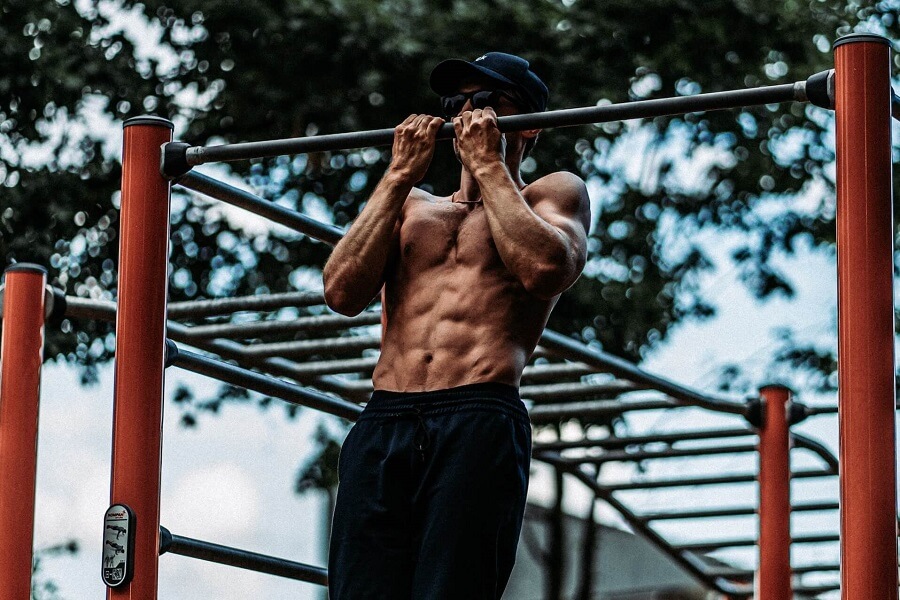
Chin up is an excellent exercise that will develop your biceps and upper back. If this exercise is too hard for you, you can try assisted chin ups instead. If it’s too easy, please check muscle up progression for more exercise ideas.
Chin up muscles worked:
Primary
- Upper back
- Biceps
Secondary
- Abs
Equipment:
How to perform chin ups
Positioning:
Start by grabbing a bar with your hands at shoulder width. Your palms will be facing toward you. Hang freely from the bar. Point your toes down.
Upward movement:
Pull yourself up by flexing your arms in your elbows. Keep on pulling until your chin is above the bar.
Don’t force a chin over the bar by extending your neck and facing up. Keep your head pointed forward. Your head should be in the same position as if you were standing.
Downward movement:
Slowly lower yourself down by extending your arms at your elbows. Keep on lowering down until your arms are completely straight.
Lunges

Lunges are great single leg exercise. This exercise is used for targeting your quads and glutes.
Lunges muscles worked:
Primary
- Quads
- Glutes
Secondary
- Hamstrings
- Calves
Equipment:
- None
How to perform lunges
Positioning:
Stand with your legs one in front of the other and spread them wide. Your working leg should be bent in your knee. Your other leg will be slightly bent in your knee (almost straight).
The leg you are standing on is your working leg. This leg will bear most of the weight during the exercise.
Downward movement:
Slowly bend your leg on which you are standing by bending your knee and lowering your butt.
Keep lowering down until you touch the ground with the knee of your non working leg. Hold for a second, but don’t rest on your knee. Keep your working leg fully engaged.
Upward movement:
Start moving up by extending the leg on which you are standing by straightening your knee. Keep on moving up until you reach a starting position.
Push Ups
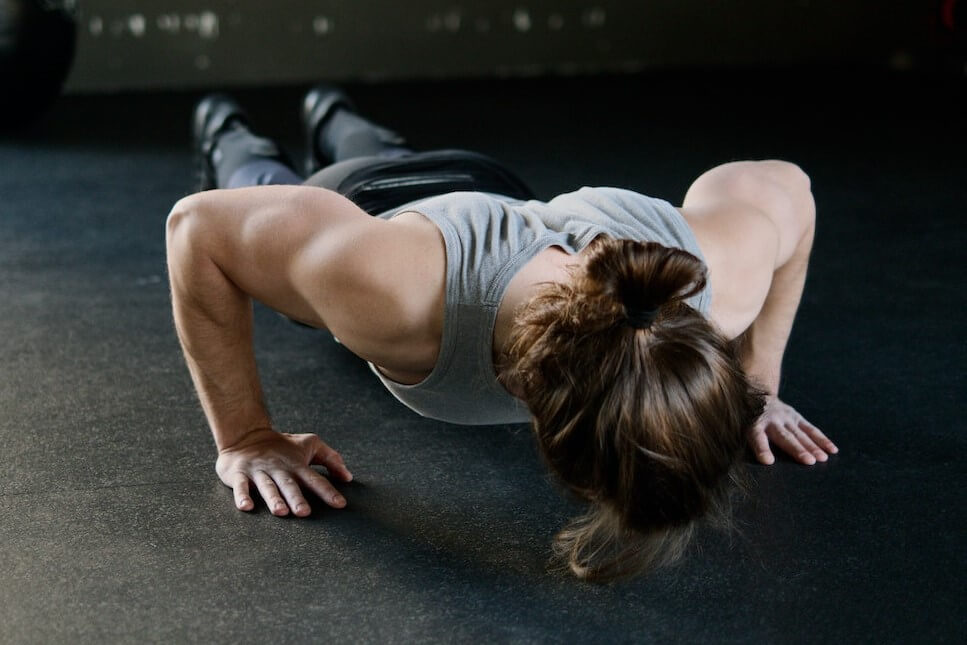
Push ups are an excellent exercise for developing your chest muscles. Especially if you concentrate on performing it correctly. Keeping the focus on extending time on the eccentric part of the movement (when you lower yourself down).
Push ups muscles worked:
Primary
- Chest
- Triceps
- Front deltoids
Secondary
- Abs
- Lower back
Equipment:
- None
How to perform push ups
Positioning:
Position your hands on the ground a bit wider than your shoulder width. Your legs are on the floor touching the ground on your feet balls and toes.
Keep your entire body in a straight line by contracting your abs throughout the entire exercise.
Downward movement:
Lower yourself down by flexing your arms in your elbows, targeting to touch the floor with your chest.
When you touch the floor with your chest (or get to the floor as close as possible) this is the lowest point of downward movement.
Upward movement:
To start moving up, push yourself up from the floor by straightening your arms in your elbows. Keep on pushing until your arms are straight.
This is the highest point of upward movement.
Dips
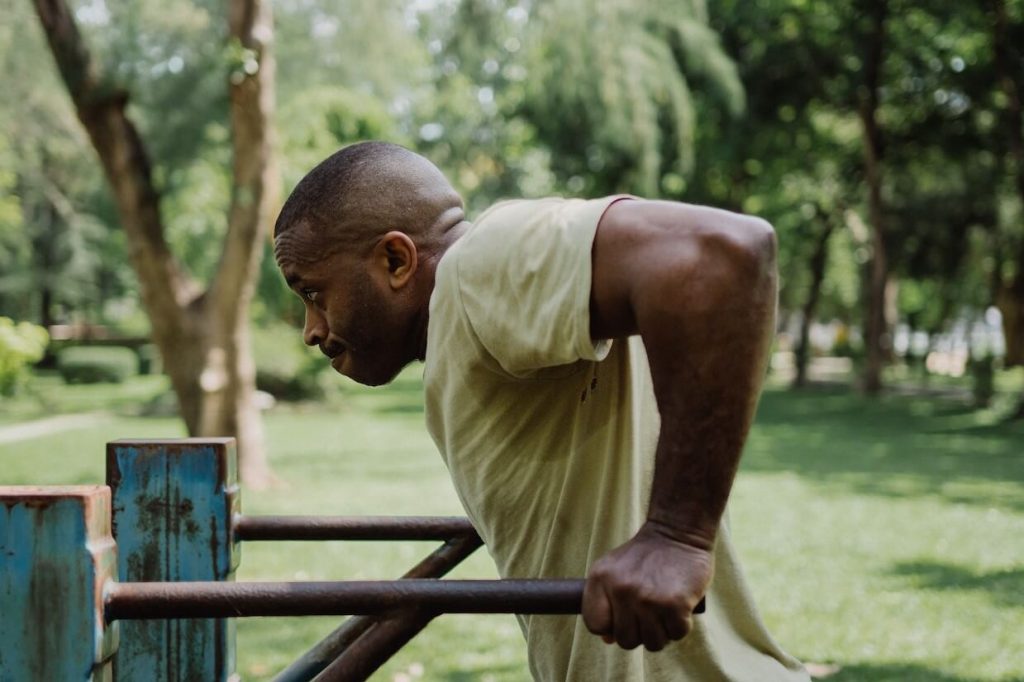
Dips are a great exercise to build your triceps. This exercise will also work your chest and shoulder muscles.
Dips muscles worked:
Primary
- Chest
- Triceps
- Front deltoids
Secondary
- Abs
Equipment:
- Dip bars
How to perform dips
Positioning:
Grab dip bars with both hands. Keep straight as much as you can. Don’t allow your shoulders to come up to your ears during the exercise. Keep your shoulders depressed down the whole time.
Downward movement:
To start moving down, lower your body straight down by bending your elbows. Keep on lowering down until your upper arms form a 90 degree angle to your forearms. This is the lowest position of downward movement.
Upward movement:
To start moving up, push against the dip bars and start straightening your elbows. Keep on straightening your elbows until your arms are fully extended. This is the highest point of this movement.
Hanging Leg Raises
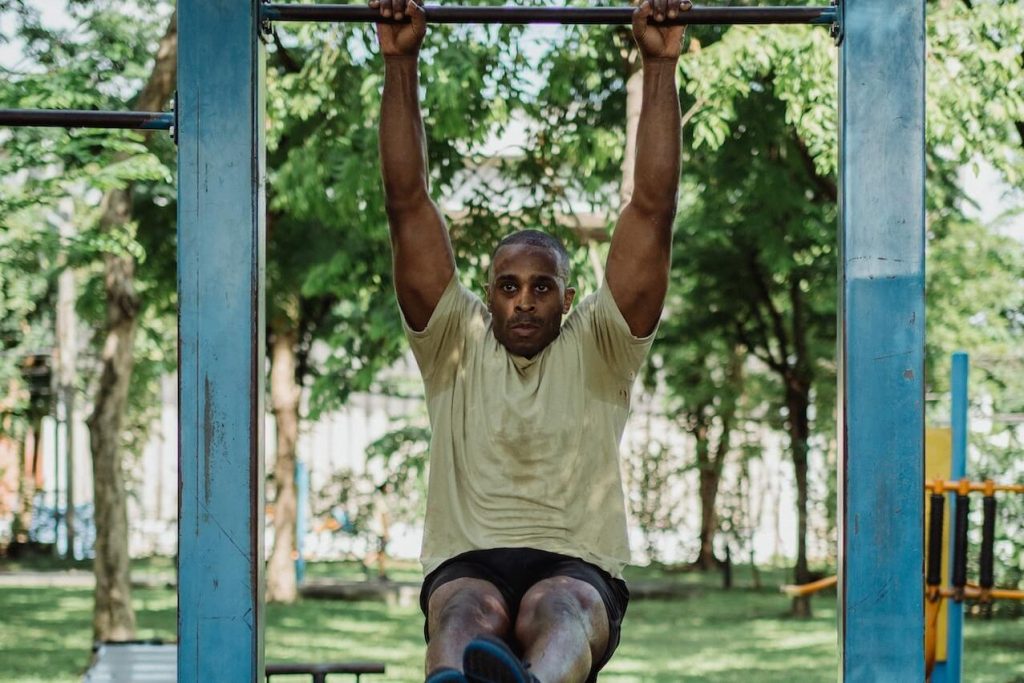
Hanging leg raises are an excellent exercise for improving your core strength. If you have a pull up bar available, hanging core exercises are really what you will want to incorporate into your training regime.
Hanging leg raises muscles worked:
- Abs
- Hip flexors
Equipment:
How to perform hanging leg raises
Positioning:
Grab a pull up bar with your hands slightly wider than shoulder width and your palms facing away from you. Let your legs hang freely with your toes pointing down.
Upward movement:
Start raising your legs by bending your hips, keeping your legs straight, and activating your abs. The upper body should be calm and not swinging.
Keep raising your legs until they form a 90 degrees angle to your body.
Downward movement:
Lower your legs slowly down by straightening them in your hips until your whole body is in a straight hanging position.
Calf Raises
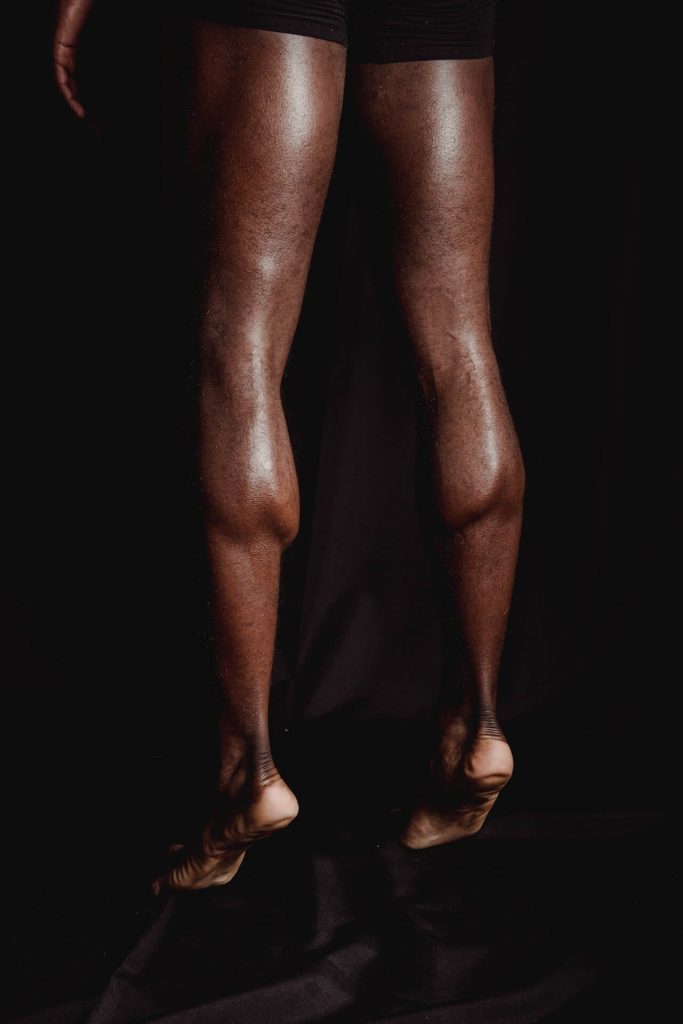
Calf raises are a basic version of a calf raise exercise. This is a great exercise for improving your calf’s strength and size.
Calf raises muscles worked:
- Calves (gastrocnemius and soleus)
Equipment:
- None
How to perform calf raises
Positioning:
Stand straight with your feet at about hip width apart.
Upward movement:
Start raising your body by keeping weight on the balls of your feet and extending your feet up by raising your heels from the ground. Do this movement until you can’t raise any further.
Downward movement:
Slowly lower yourself down by releasing your calves and lowering your heels back to the ground.
Pike Push Ups
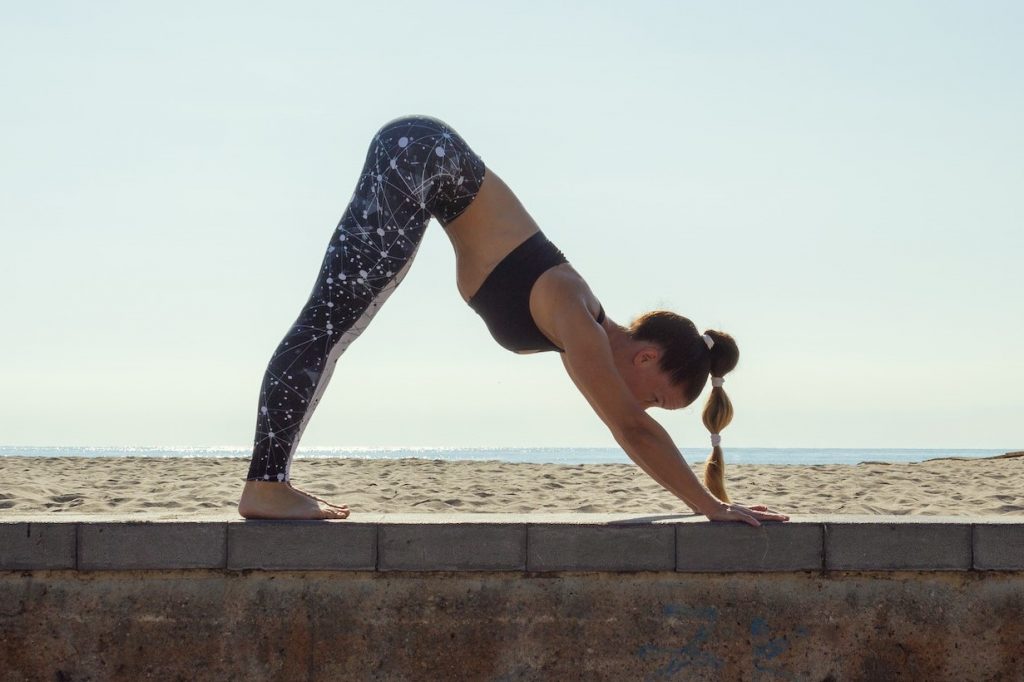
Pike push ups will help you develop your shoulder muscles and your deltoids. Starting position of a pike push up is similar to a downward dog yoga pose.
Pike push ups muscles worked:
Primary:
- Delts
- Triceps
- Chest
- Traps
- Serratus anterior
Secondary:
- Core
- Glutes
- Hamstrings
- Calves
Equipment:
- Exercise mat (optional)
How to perform pike push ups
Positioning:
To perform a pike push up with perfect form your upper body will be positioned as close to 90 degrees to the floor as possible.
You will be bent in your hips and your body will form an A shape.
Your legs will be straight and form less than 90 degree angle to your upper body.
Your toes and your hands will be positioned on the floor. So, your butt will be the highest point of your body in this position.
Downward movement:
To start going down, bend your arms at your elbows. Allow your head to go down toward your hands positioned on the floor.
Keep on lowering down as much as you can. If you can, touch the ground with your head. But, don’t rest your head on the floor.
Upward movement:
To start moving back up, push against the floor. Extend your arms at your elbows. Keep on pushing until you reach the starting A-frame position.
Band Face Pull
Face pull is a great exercise for posterior shoulder muscle development. It’s the back part of your shoulders.
Band face pull muscles worked:
- Rear delts
- Traps (mid and lower)
- External shoulder rotators (infraspinatus and teres major)
Equipment:
- Resistance band
- Pull up bar
How to perform band face pulls
Positioning:
Stand with your feet positioned slightly wider than your hip width. Face forward toward where the band is attached.
Grab a band with your thumbs facing backward.
Backward movement:
Pull the band back leading with your elbows and following with your hands. Keep on pulling back as far as you can without feeling discomfort or pain.
Your elbows should be positioned slightly below your shoulders throughout the movement.
Concentrate on trying to do a shoulder rotation at the end of the movement. After you can’t move your elbows further back, you continue pulling your hands back as far as they can go.
Forward movement:
Slowly release the band by letting your hands and elbows go forward. Let the band pull your arms back to return to the starting position. This should be a slow controlled motion. Don’t let a band snap back on its own.
Single Leg Hip Thrusts
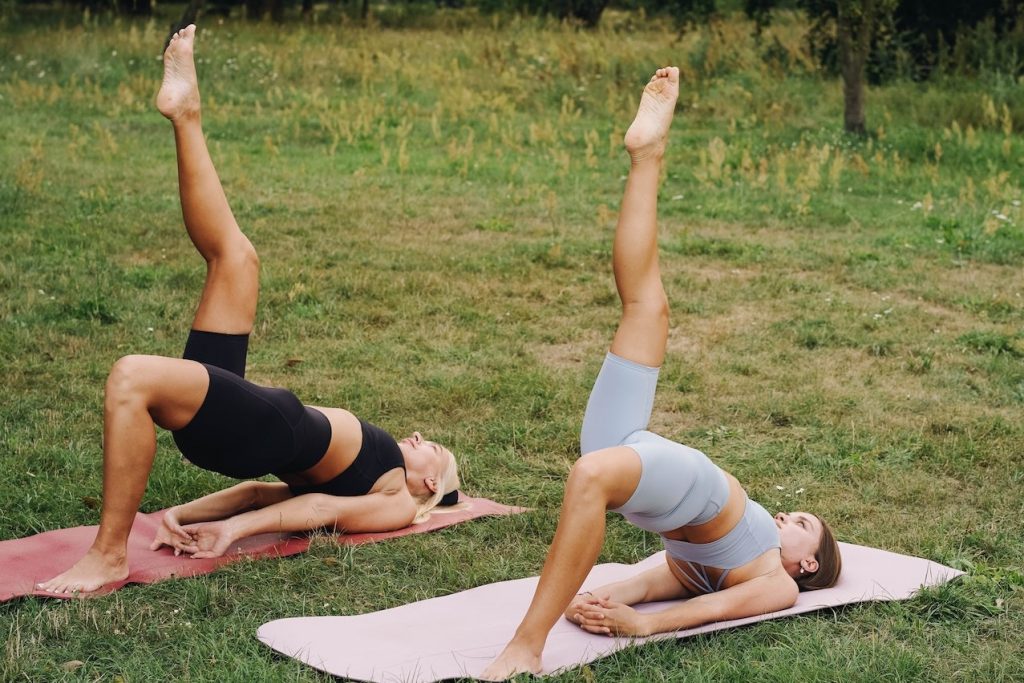
This exercise will help you develop stronger glutes, hamstrings, and lower back muscles.
Single leg hip thrusts muscles worked:
Primary
- Gluteus
Secondary
- Hamstrings
- Spinal erectors
- Quads
- Hip flexors
- Adductors
Equipment:
- Bench (optional – can be performed on the floor)
How to perform single leg hip thrusts
I will here explain how to do a single leg hip thrust lying on the floor. Alternatively, you can do it using a bench by placing your upper back against a bench.
Positioning:
Lay down on the floor on your back. Place your hands next to your body at a slight angle with palms facing down. Bend your both legs at your knees.
Upward movement:
Press hard against the floor with one of your legs (your working leg) while raising your but, your back, and your other leg from the floor. Keep raising your but and your back from the floor until your back and your working leg are in a straight line to your working leg knee.
Your other leg will be raised up in the air with your knee flexed at around 90 degrees angle.
Downward movement:
Lower your back slowly down until it’s flat on the floor with both of your legs touching the floor with knees bent at the same angle.
Superman Lifts
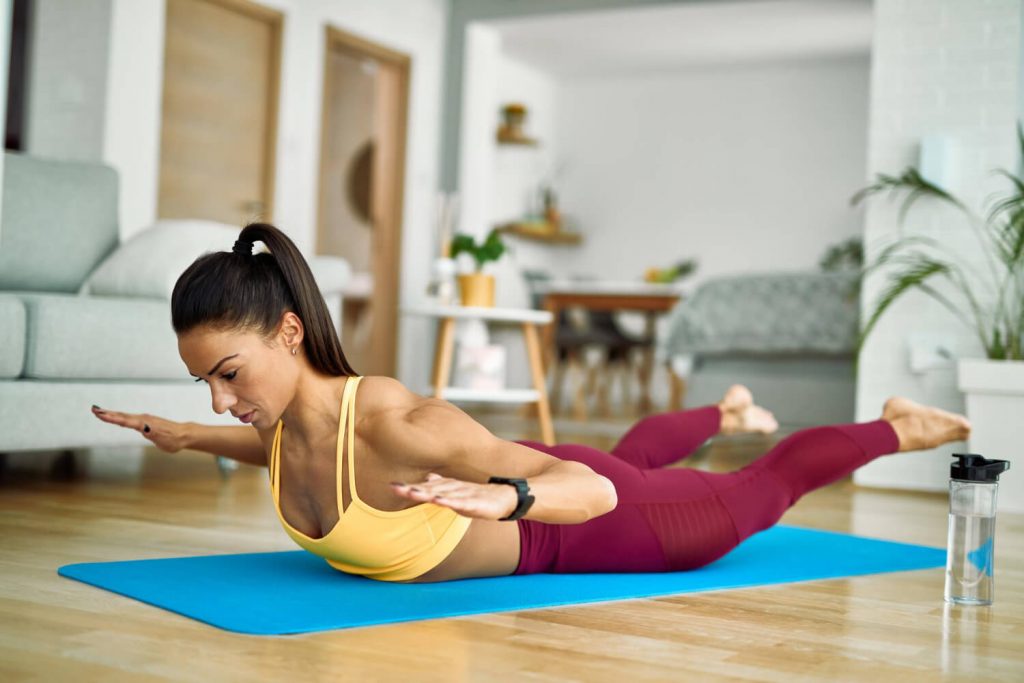
Superman lifts are a great exercise for your lower back. Most of the exercises out there are targeting the front of your body. Core exercises are not an exception.
Most of the core exercises are targeting your abs.
Superman lifts are here to help you keep a balanced approach to building your muscles.
Superman lifts muscles worked:
Primary
- Lower back
Secondary
- Hamstrings
- Glutes
- Abs
Equipment:
- Exercise mat (optional)
How to perform superman lifts
Positioning:
Lay on your stomach. Keep your legs straight. Extend your arms in front of you.
Upward movement:
Gradually pull up your upper body, your hands, and your legs in the air. Your entire body should be arched. Only your belly will be touching the ground.
Downward movement:
Slowly return down with your entire body touching the ground and repeat for reps.

